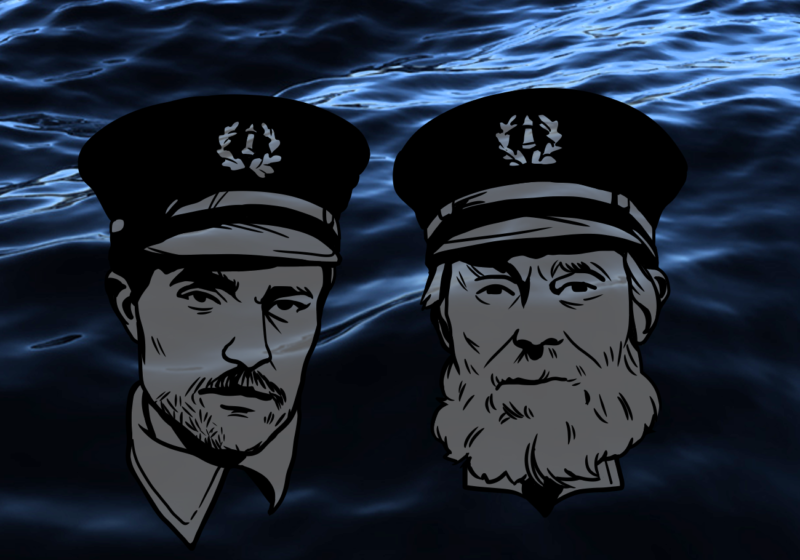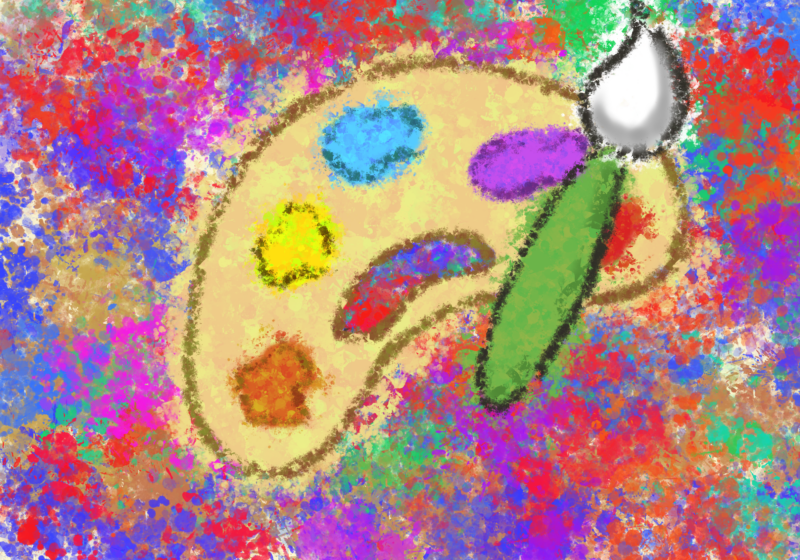Not one minute into the film, the foghorn begins to sound. This blaring tone not only follows the main characters throughout the film, but the viewer, too. While this and the other elements of the sea slowly drive the film’s characters insane, you share in their plight, being exposed to those mind-altering events alongside them. This shared madness is why “The Lighthouse” is a great film.
The film follows two lighthouse keepers — Winslow, played by Robert Pattinson, and Thomas, played by Willem Dafoe, who fight for sanity as the harsh conditions of the island they’re stranded on wears on them.
It’s directed by Roger Eggers, whose last film, “The Witch,” was similar in its mentally draining and disturbing qualities. “The Lighthouse” is shot in black and white, which not only helps to give it an old-timey aesthetic, but allows Eggers to experiment with and give a great deal of focus to light and shadows. Eggers casts shadows on the faces of the main characters during scenes of intense emotional release, distorting and hiding their expressions, visually representing the malformation of their mental states over time. Otherwise, Eggers’ hyper-focused direction makes every single scene exciting, visually stimulating, and thought-provoking.
Alongside Roger’s directing, the performances of this film also make it compelling. Both Robert Pattinson and Willem Dafoe do an incredible job in their respective roles. Pattinson’s Winslow, a shy, bitter young man who is new to being a lighthouse keeper, believably represents his character’s descent into madness. His facial expressions become twisted as the film goes on, as does his general demeanor, becoming more irritable. Even the way he speaks becomes more savage, as in one memorable scene where he laughs in a way so indescribably disturbing that I couldn’t believe my ears.
Dafoe plays a seasoned lighthouse keeper who used to be a sailor, but retired due to his peg-leg. He plays the stereotypical sailor perfectly, nailing the accent and rowdy mannerisms. He reminisces about his love of the sea many times throughout the film, and if I didn’t know it was Willem Dafoe, I’d believe I was watching a true ex-sailor. Because of their strong performances, the personality clashes between Pattinson and Dafoe provide the film with some of its best scenes. I won’t go into too much detail, but the on-screen relationship between Pattinson and Dafoe is one of the most original and entertaining I’ve seen in years.
The setting of the film also becomes a kind of character in itself. It builds the myth of the sea up to be something terrifying and insurmountable, as elements of it drive the characters to their mental limit, Robert Pattinson in particular. He’s sprayed constantly with ocean water, attacked by sea birds, and haunted by visions of mermaids and tentacled creatures. The relentless manner in which the sea terrorizes the characters of the movie make it a completely daunting element, sublime in its mystery and power.
The culmination of all of these elements makes “The Lighthouse” into a truly special psychological horror film. Long after finishing the film, the mere thought of the sea will make your stomach churn.






